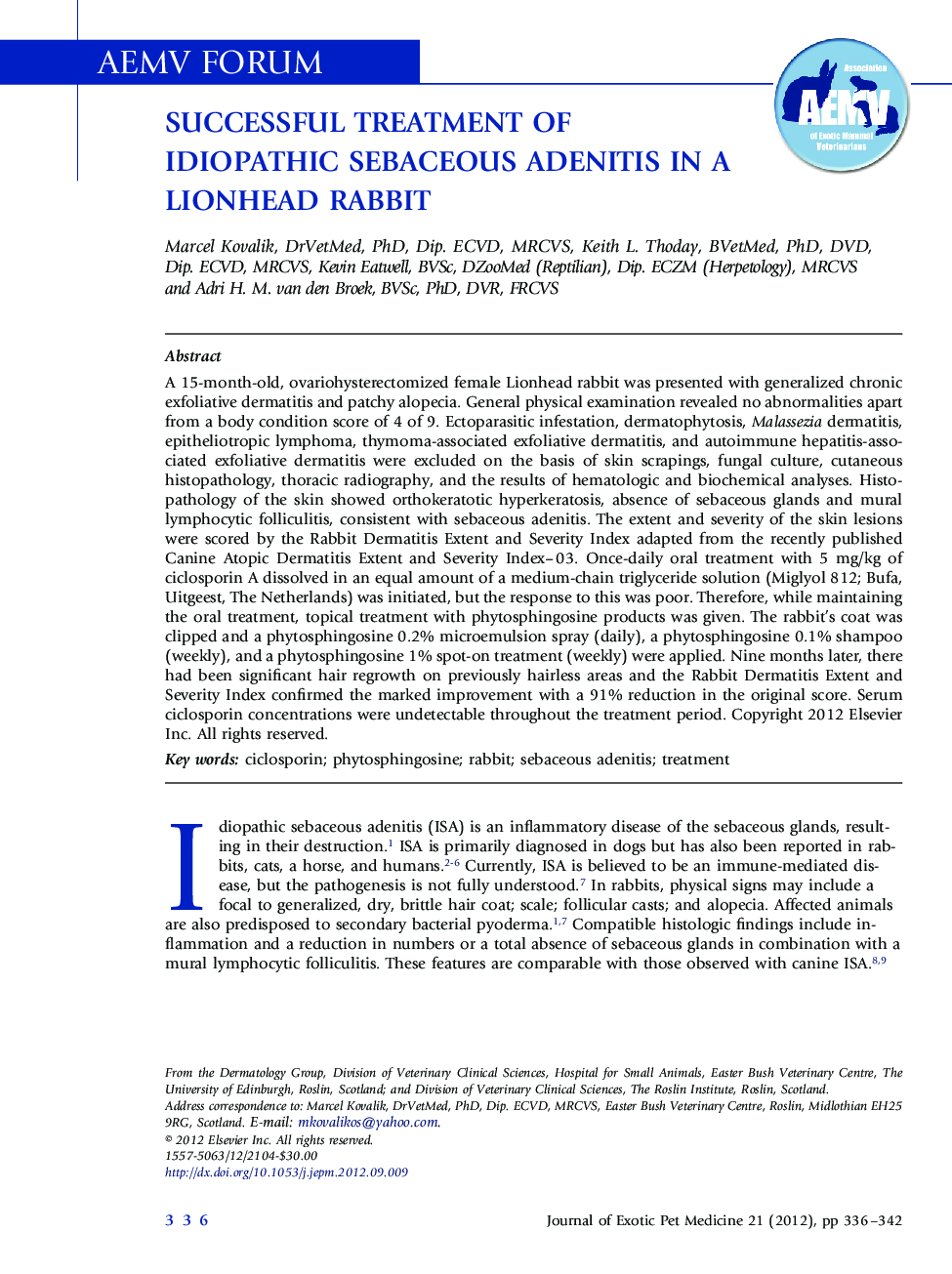| Article ID | Journal | Published Year | Pages | File Type |
|---|---|---|---|---|
| 2396967 | Journal of Exotic Pet Medicine | 2012 | 7 Pages |
A 15-month-old, ovariohysterectomized female Lionhead rabbit was presented with generalized chronic exfoliative dermatitis and patchy alopecia. General physical examination revealed no abnormalities apart from a body condition score of 4 of 9. Ectoparasitic infestation, dermatophytosis, Malassezia dermatitis, epitheliotropic lymphoma, thymoma-associated exfoliative dermatitis, and autoimmune hepatitis-associated exfoliative dermatitis were excluded on the basis of skin scrapings, fungal culture, cutaneous histopathology, thoracic radiography, and the results of hematologic and biochemical analyses. Histopathology of the skin showed orthokeratotic hyperkeratosis, absence of sebaceous glands and mural lymphocytic folliculitis, consistent with sebaceous adenitis. The extent and severity of the skin lesions were scored by the Rabbit Dermatitis Extent and Severity Index adapted from the recently published Canine Atopic Dermatitis Extent and Severity Index–03. Once-daily oral treatment with 5 mg/kg of ciclosporin A dissolved in an equal amount of a medium-chain triglyceride solution (Miglyol 812; Bufa, Uitgeest, The Netherlands) was initiated, but the response to this was poor. Therefore, while maintaining the oral treatment, topical treatment with phytosphingosine products was given. The rabbit's coat was clipped and a phytosphingosine 0.2% microemulsion spray (daily), a phytosphingosine 0.1% shampoo (weekly), and a phytosphingosine 1% spot-on treatment (weekly) were applied. Nine months later, there had been significant hair regrowth on previously hairless areas and the Rabbit Dermatitis Extent and Severity Index confirmed the marked improvement with a 91% reduction in the original score. Serum ciclosporin concentrations were undetectable throughout the treatment period.
